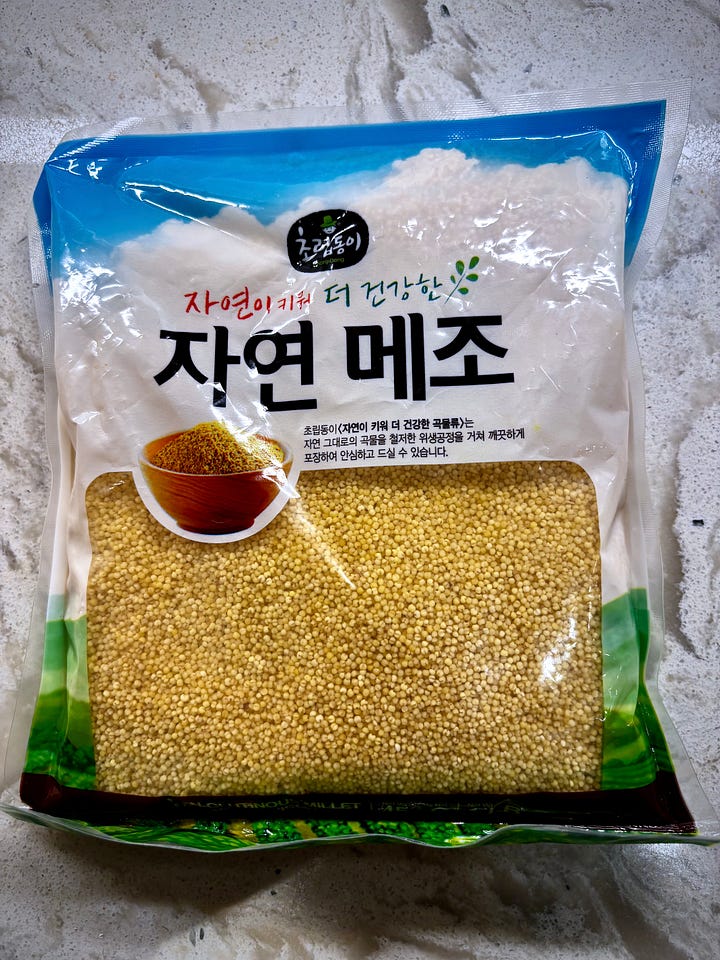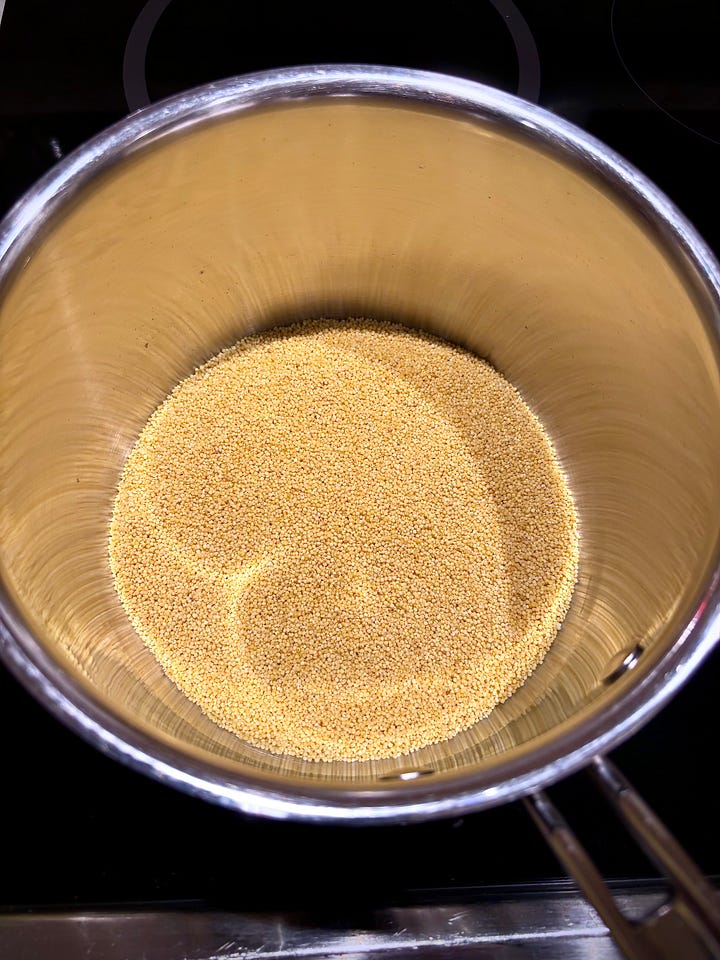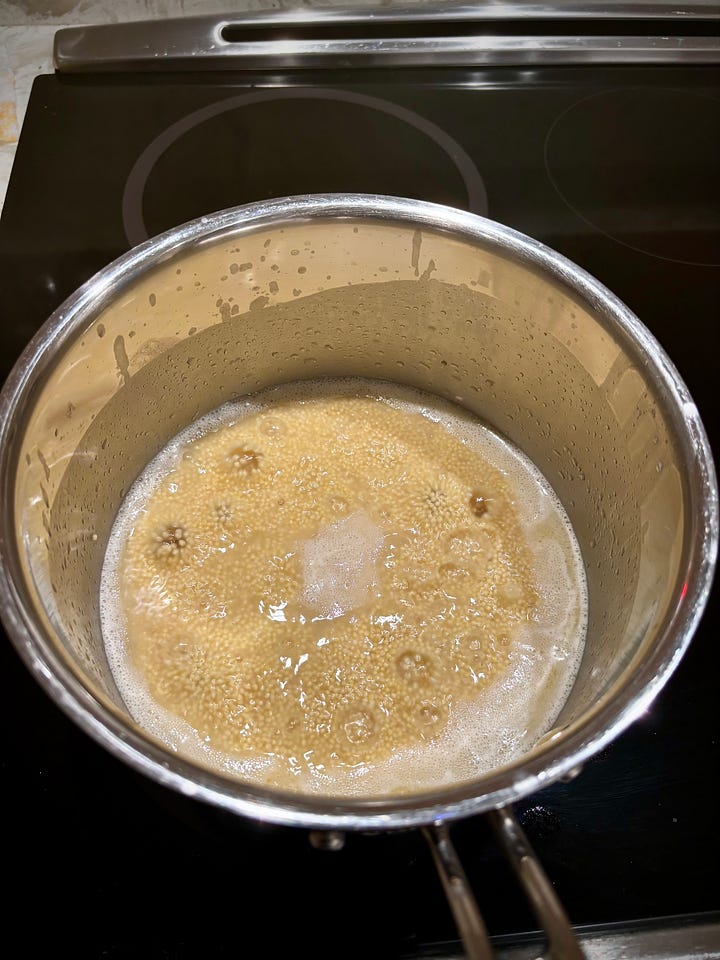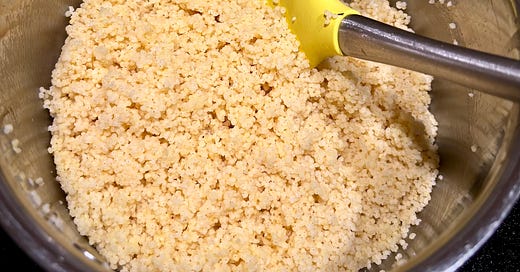How to Cook Millet, a GF Grain
A tasty alternative to rice, millet has a mild, nutty flavor. Here’s how I make it.
Millet is a gluten-free grain that doesn’t get much attention. Yet, it’s just as easy to cook as rice, offers a mild, nutty flavor, and makes an enticing pilaf. If you’ve never seen millet, it is a very small, round, yellow-gold seed.
I like to use chicken stock and butter when making my millet pilaf, for extra flavor. When cooking the pilaf, you’re going to use a ratio of 1 cup dry millet to 2 parts liquid. Some people also prepare millet as a porridge, which I’ve never done, but it’s simply a matter of adding more liquid while cooking if you’d like to try it (such as 1 part millet to 3 parts liquid). As with the other gluten-free grain I’ve written about, adlay (see recipe here), millet is more commonly eaten in Asia than in Europe and North America (it is also a staple in West Africa); in fact, when I shop for millet, I always go to a Korean supermarket, like H-Mart or Lotte, although it of course can also be purchased from online shopping sites (the well-known brand Bob’s Red Mill has millet).
According to my mother-in-law, who was born in China, the Chinese used to consider millet to be an inferior grain to rice (when visiting her aunt, the aunt would cook millet for her, but gave rice to all her brothers, because in her traditional view, sons were more valuable than daughters). But now, at least in the U.S., the price of millet per ounce is quite a bit more than rice, which I suspect is one reason millet isn’t consumed more often here (another reason may be that it is commonly used as bird seed).
One main difference in my approach to cooking millet compared to other grains is that I don’t soak or even rinse the grains before cooking, because I want to toast the dry grains over moderate heat for a few minutes before adding the liquid, which gives a warm, toasty flavor. And that reminds me that this is a recipe where you’re going to rely on your senses to cook more than strict timing, because I’d like you to toast the grains until they start to smell toasty. So use your nose to tell you when it is time to add the stock. Some grains may pop when they’re toasting, so you’re using your ears too!
As a mentioned, I like to serve this as a simple side dish for any main course; if you’d like to jazz up your pilaf, you can add some flavorings, such as chopped parsley or scallions, when you fluff the millet after cooking. You could also use the millet as a base for a lunch bowl or a salad. I also think it makes a good GF substitute for couscous if you’re planning to cook a North African–style meal, like tagine.
Ingredients:
1 cup dry millet
2 cups chicken or vegetable stock
1 tablespoon unsalted butter or olive oil
¼ teaspoon salt
Directions:
Place a 3-quart sauce pan over medium heat and add the dry millet
Slowly stir the millet around the hot pan until it starts to the smell toasty (some of the grains may pop)—time may vary, but likely about 3 minutes
Add the stock, turn up the heat, and bring the liquid to a boil
When the pot is boiling, add the butter or oil and salt, stir until the butter melts, then cover the pan with its lid and turn the heat down to low (simmer)
Cook the millet covered for 20 minutes (resist the urge to look!)
After 20 minutes, remove the pan from the heat and let it rest for 10 minutes
Remove the cover, fluff the millet with a fork, and serve









This is so great. I've been looking for a good savory millet recipe forever. I can't wait to try it.
We're doing more and more vegetarian cooking this year. Thanks for sharing!
Thanks for the recipe!